AO Release Coming Soon: Can Arweave regain momentum?

Reprinted from panewslab
01/15/2025·21days ago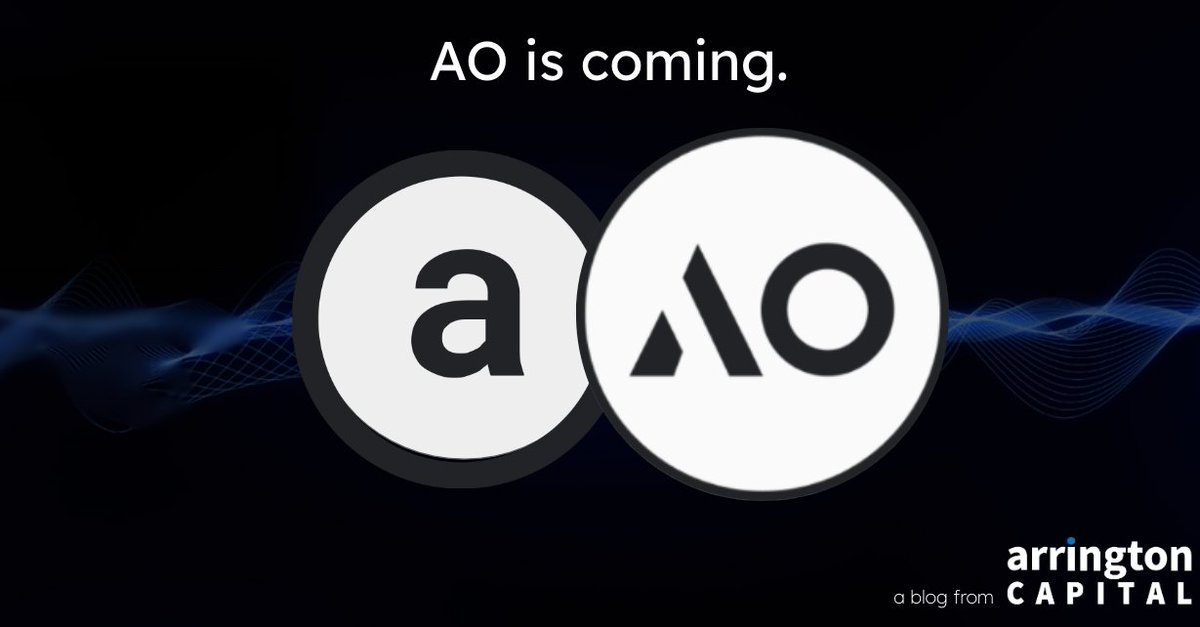
Original text: ArringtonCapital
Compiled by: Yuliya, PANews
On February 8, 2025, the AO mainnet will be launched soon, which is an important milestone for the AI and cryptocurrency communities. AO aims to provide a highly parallel computing layer for agent applications, and Arweave, the permanent data storage network behind it, plays a key role. This article will provide an in-depth analysis of Arweave’s permanent storage architecture, AO’s hyper-parallel computing model, and how the two promote the future development of autonomous agents on the chain. At the same time, the challenges faced by AR and AO, market dynamics, and how to participate will also be discussed.
Arweave overview
Arweave is a decentralized permanent data storage network. Users only need to pay a one-time storage fee to obtain permanent data storage services. Unlike other storage networks (such as Filecoin) that require ongoing payment of fees, Arweave uses a unique block structure called "blockweave". Each new block is not only linked to the previous block, but also randomly linked to earlier historical blocks, ensuring that miners must hold complete historical data to generate new blocks, thereby achieving long-term preservation of data.
Arweave’s native token AR is used to pay storage fees and reward miners. When users upload new data and pay fees, approximately 85% of the tokens are deposited into a fund for future miner rewards. This design ensures that miner incentives are independent of user activity, increasing confidence in permanent storage of data.
growth trajectory
Since going live in June 2018, Arweave usage has grown significantly in 2021. The chart below tracks weekly data uploads since the network launched:
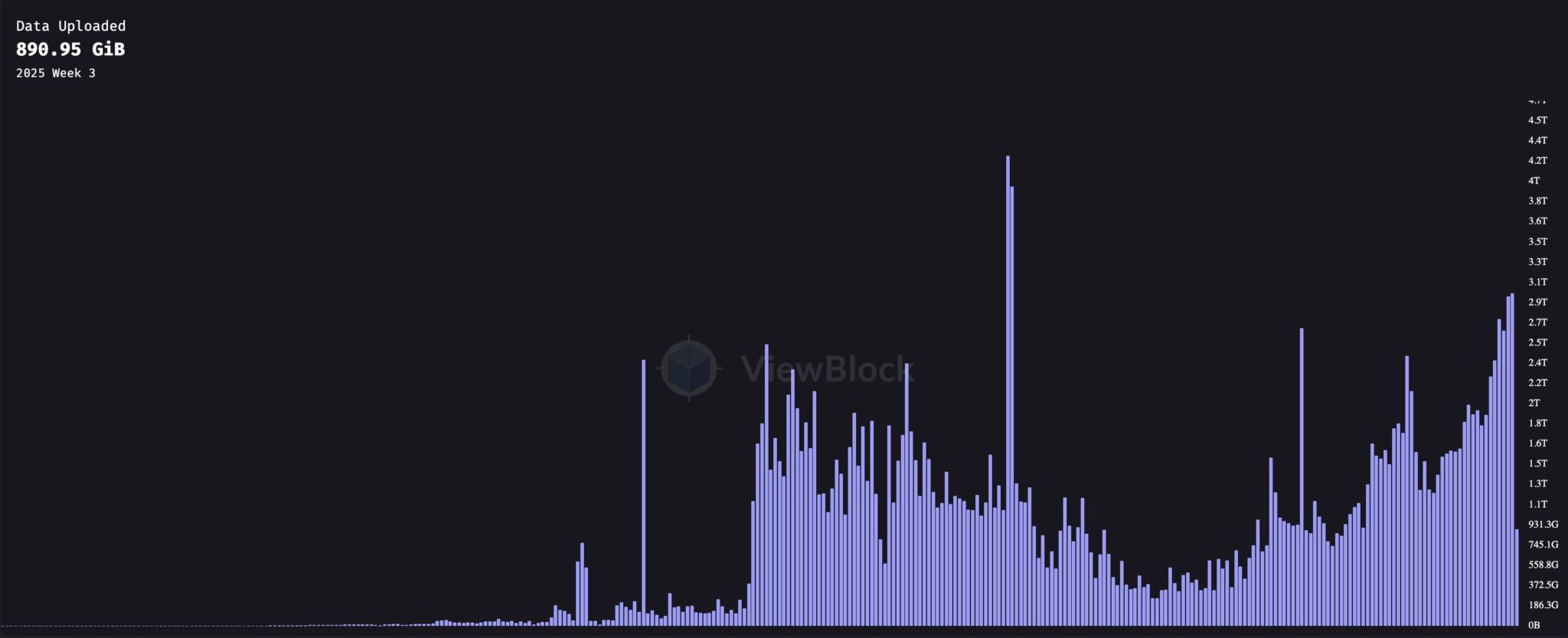
Data storage volume peaked in September 2021, bottomed out in June 2023, and has climbed steadily since then. The chart below breaks down the types of data uploaded each month.
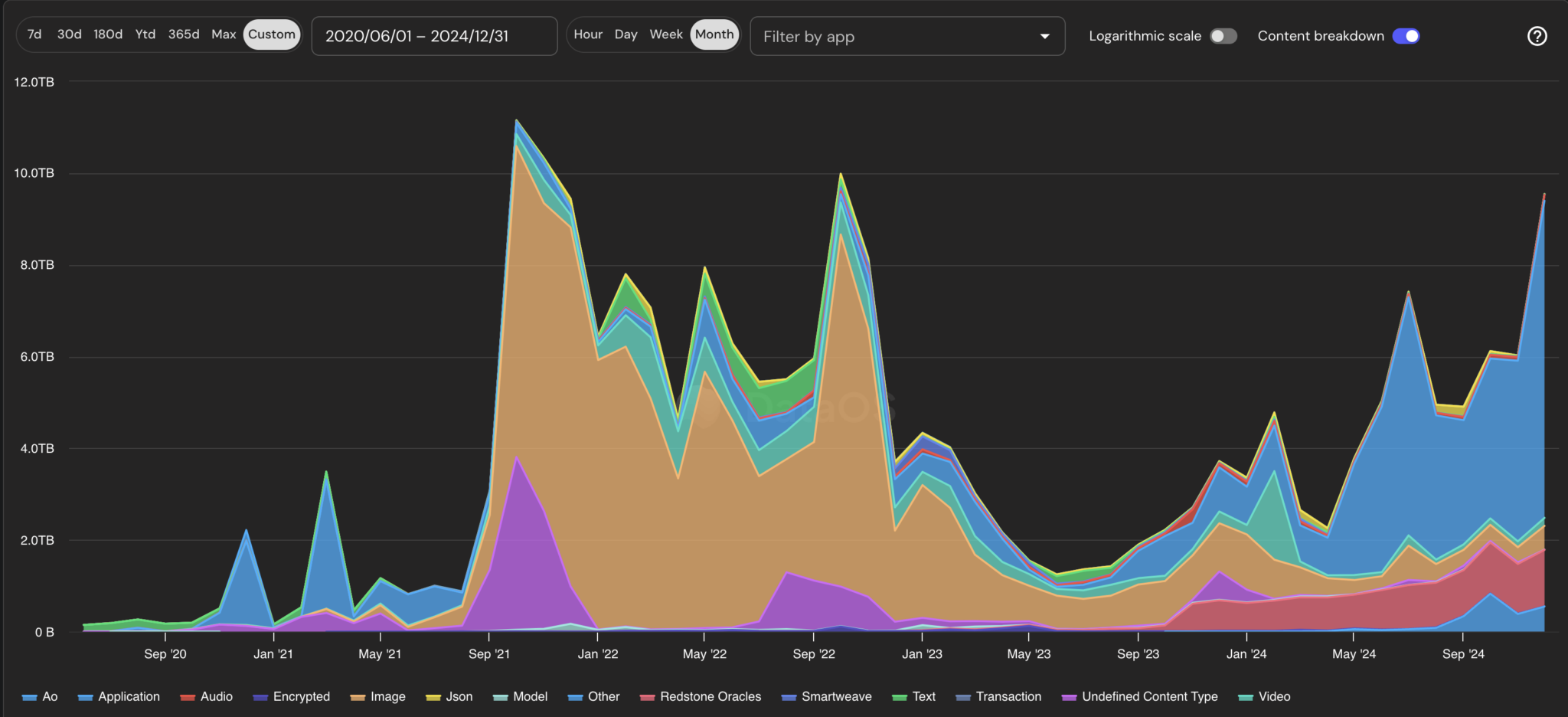
Arweave usage over time, by size
In 2021, the rise of NFTs drove the first major increase in Arweave data storage demand. Creators began uploading JPEGs and images to Arweave rather than relying on centralized hosting services, a trend that saw Arweave's usage surge. Due to its permanent and decentralized nature, Arweave is an ideal choice for NFT artwork data storage.
Since 2023, a series of new usage scenarios have emerged. Among all categories, apps take up the most storage space. These are primarily packager applications that package multiple transactions and data together and publish them to Arweave. These include Bundlr (the team has renamed it Irys.xyz and will launch its own data link in addition to the bundler app) and Ardrive Turbo . The data packaged by these applications includes content that might previously have been classified as images, videos, or other blockchain data. In addition to these packager applications, there are other projects taking advantage of Arweave’s permanent storage capabilities, including Lens’ social application Hey , content publishing platform Mirror , and AI application scenario Ritual .
Judging from the number of transactions, although Arweave charges fees based on the size of the stored data, the use case of the growing number of transactions may indicate the future development direction of Arweave.
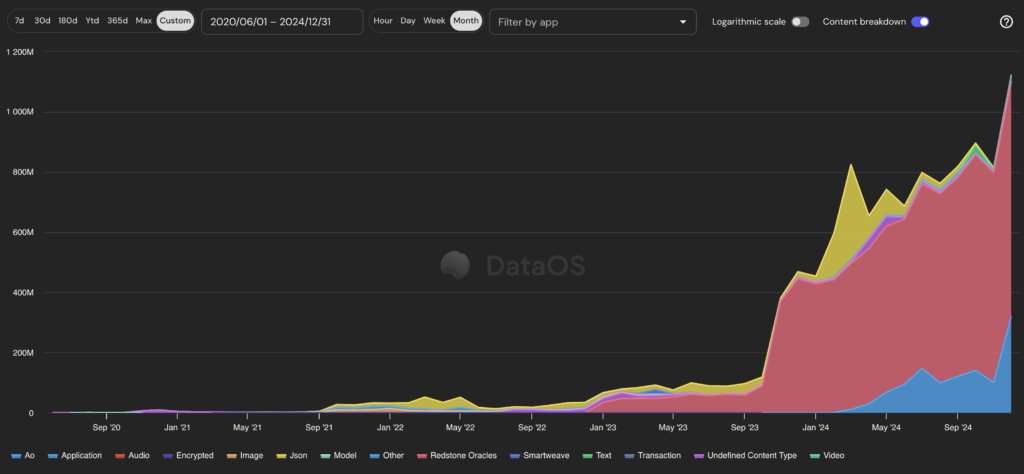
Arweave usage over time (by number of transactions)
Transaction volume data shows that the two fastest growing use cases in the blockchain ecosystem are Redstone and AO .
- Redstone
Redstone is one of the fastest growing oracle networks in crypto, providing price data for multiple assets to all major EVM chains. The network's rapid growth is driven by its expanding partnerships and product capabilities.
- AO
AO is a parallel computing and agent messaging layer built on Arweave. Although it is still in the testnet stage, its mainnet is planned to be launched in February 2025. The design goal of AO is to provide efficient computing infrastructure for agent applications and utilize Arweave's permanent storage capabilities to provide support for autonomous agents on the chain.
Criticisms of Arweave
While Arweave's storage model is well-received, it has faced some criticism, particularly its lower fee revenue. The following is a comparison of PE ratios of different blockchains:

From a price/fee ratio perspective, Arweave only outperforms Avalanche in the L1 chain. A lower ratio indicates that users are paying more relative to the fully diluted value (FDV) of the network. These figures reflect the total fees incurred but do not take into account miner payments or Arweave’s endowment contribution. Since Arweave allocates a larger proportion of fees to miners, its short-term profits may appear smaller than other chains.
AR Token Performance
In 2024, after the announcement of the AO project, AR will usher in significant growth. Following the announcement, Arweave token prices surged from less than $10 each to over $40. The market has shown strong interest in the possibilities that AO brings to cryptocurrencies and the expected growth in activity at Arweave.
Starting from February 2024, AR holders can accumulate AO tokens by holding AR in their wallet. Currently, 33% of newly created AO are being circulated to holders, and these tokens will be open for transfer when the AO mainnet is launched in February 2025.
After the launch of the mainnet, AR holders will continue to receive one-third of the issuance of AO tokens until the creation limit of 2.1 million AO tokens is reached. These rewards are calculated every five minutes at a monthly rate of 1.425% of the remaining supply, meaning the number of tokens issued will decrease over time.
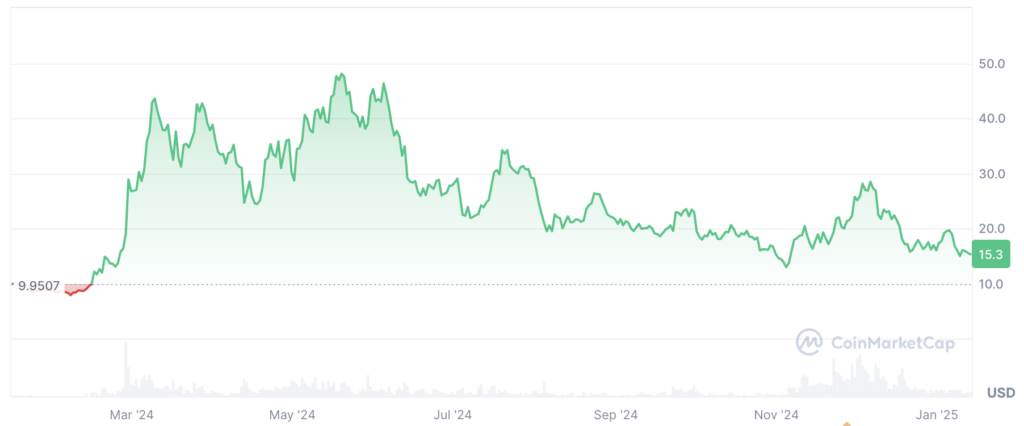
AR price (USD)
As the overall market went lower, so did the price of AR over the summer. Compared with tokens with AI value attributes such as RENDER, TAO, and NEAR, AR’s performance is relatively lagging behind. On-chain fund flows may be an important factor causing this phenomenon.
Since September 2024, the market has observed a large player continuing to sell large amounts of AR tokens. There are clues to the investor's identity but it has not yet been confirmed. The wallet address dRFuVE-s6-TgmykU4Zqn246AR2PIsf3HhBhZ0t5-WXE received over 10 million AR tokens in November 2021 (the total AR supply is less than 66 million). The wallet has transfer records before 2023 and still holds 5 million tokens in 2024 (worth approximately $80 million at the current price of $16).
On September 6, the wallet transferred the remaining 5 million tokens to two new addresses. These addresses subsequently transferred tokens to exchanges, indicating that these may be market maker addresses. Of the 5 million tokens, approximately 1.35 million tokens remain in addresses presumed to be market makers waiting to be transferred to exchanges.
The behavior of two addresses transferring funds to the same destination address on the exchange indicates that this is likely to be the same market maker operation. This wave of selling pressure accounts for a large proportion of the circulating supply, exceeding 7% of the total AR token supply. Market analysts believe that once the remaining tokens are sold, the downward pressure on the AR market may be relieved.
AO overview
AO is a decentralized “hyper-parallelized” network that breaks through traditional limitations on the scale and type of on-chain computation while maintaining the verifiability of all operations. At the core of AO is a messaging layer that supports independent and parallel processes, and leverages Arweave to provide permanent data storage, ensuring that all updates and interactions are permanently recorded.
"AO" stands for "Actor Oriented". Developers can build modular programs (actors), and each actor can choose its own virtual machine (VM), consensus mechanism and payment model, while passing standardized messages formats for communicating with other actors. This design allows cloud applications (such as Amazon EC2) to access AO's decentralized network and collaborate with decentralized smart contracts to achieve goals together.
AO function features
- Existing applications
Some AO agents are already in use. For example, one agent can continuously optimize crypto asset returns across multiple lending protocols; another agent can automatically execute fixed investment strategies on DEX based on user-defined parameters. These agents utilize a Trusted Execution Environment (TEE) to protect user privacy and allow users to escrow private keys, allowing them to operate fully autonomously without the need for additional instructions.
- Automatic wake-up function
Unlike other Layer1, AO's program can "wake up" autonomously without external calls. This design supports fully autonomous services. For example, a yield optimization agent can reallocate assets to higher yielding strategies while the user is sleeping, without the need for manual triggering.
AO architecture
1. Processes:
A process is equivalent to a single "actor" on AO, starting from an initial state and recording all received messages. Data is stored on Arweave, ensuring it cannot be lost or censored. By decoupling data recording from actual computation, AO can handle larger tasks than typical blockchains.
2. Messages:
Messages are a way for processes and users to interact, sent over the network with a unique ID for easy tracking. Message delivery must be correct to be delivered, which provides flexibility in flow control while ensuring messages are permanently logged.
3.Scheduler Units:
The scheduling unit adds incremental time slot numbers to the messages and ensures uploading to Arweave, maintaining a consistent record of the message sequence. Can be centralized or decentralized depending on use case requirements.
4. Compute Units:
The computing unit is responsible for the actual running of the process and can freely choose the process to be calculated, forming a competitive market for computing services. After completing their work, they return a signed proof of the process state change.
5.Messenger Units:
The message passing unit is responsible for message transmission in the network, ensuring that the messages are recorded on Arweave by the scheduling unit and then delivered to the computing unit until all operations are completed.
Challenges facing AO
The AO project faces some important challenges. Every network ultimately needs to establish strength in one or two verticals. For example, Arbitrum focuses on DeFi, Solana excels in Meme coins and DePIN, and IMX focuses on games. Arweave has always focused on content storage, blockchain archiving and oracle data permanence. AO attempts to redefine decentralized content and DeFi, especially facing challenges in promoting the application of AI agents in the DeFi field.
1.DeFi adoption challenges
Although AO is committed to promoting the integration of DeFi and AI, the adoption rate of AI agents in the DeFi field is slow and breakthrough applications have not yet appeared. The closest attempt is to introduce machine learning models on-chain for revenue optimization. However, these models are usually simple and are mainly used for revenue prediction and strategy switching cost comparison. In contrast, large language models are highly nonlinear and non-deterministic, and still have difficulties in basic calculations.
2. Background of non-DeFi chains
Arweave is not a DeFi public chain in the traditional sense, and past attempts to build DEX on it failed to succeed. Therefore, AO needs to attract Arweave’s existing community and new user groups. The token economics designed by the team reflect a deep understanding of this challenge, such as rewarding users who bridge DAI and stETH to attract funding. Currently, AO’s TVL reaches US$578 million. How to maintain the activity of these capitals is the key.
Token Economy and Participation Methods
After the mainnet is launched in February 2025, anyone can contribute computing resources or deploy their own processes and agents. Cross-chain bridges will be opened to support the transfer of any token to the AO network. As more people join and develop advanced AI or automated services, AO's decentralized and efficient architecture will unlock new possibilities in areas with trust and high computing power requirements.
Airdrop mechanism
- Total supply of tokens and release plan: The total supply of AO tokens is 21 million, which will be released in half at set intervals.
- Air investment qualification: AR holders will receive AO airdrops in proportion to their holdings; users who bridge DAI and stETH can also receive allocations.
- Distribution method: Since February 27, 2024, 1.03 million AO tokens have been allocated to holders and bridgers; AR holdings are counted every 5 minutes and used to calculate the distribution ratio.
How to participate
- Holding AR Tokens : One-third of newly issued AO tokens are allocated to AR holders
- Cross-chain transfer to DAI or stETH : Two-thirds of AO tokens are currently allocated to cross-chain users
- Use AO mainnet applications : multiple trading and lending platforms will be provided after the mainnet is launched
- Providing computing resources : Anyone can contribute computing power to various processes on AO without permission
*Disclaimer: The author Arrington Capital is an early investor in Arweave and holds AR and AO tokens.
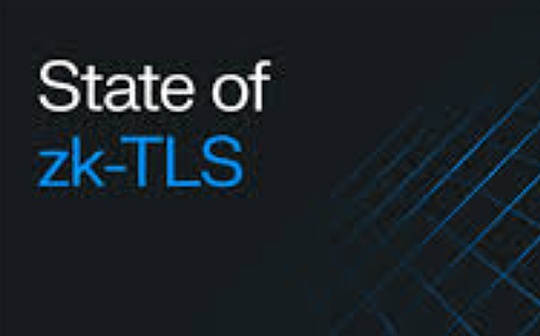
 jinse
jinse